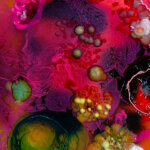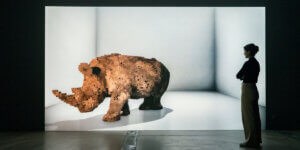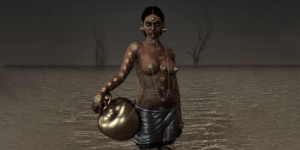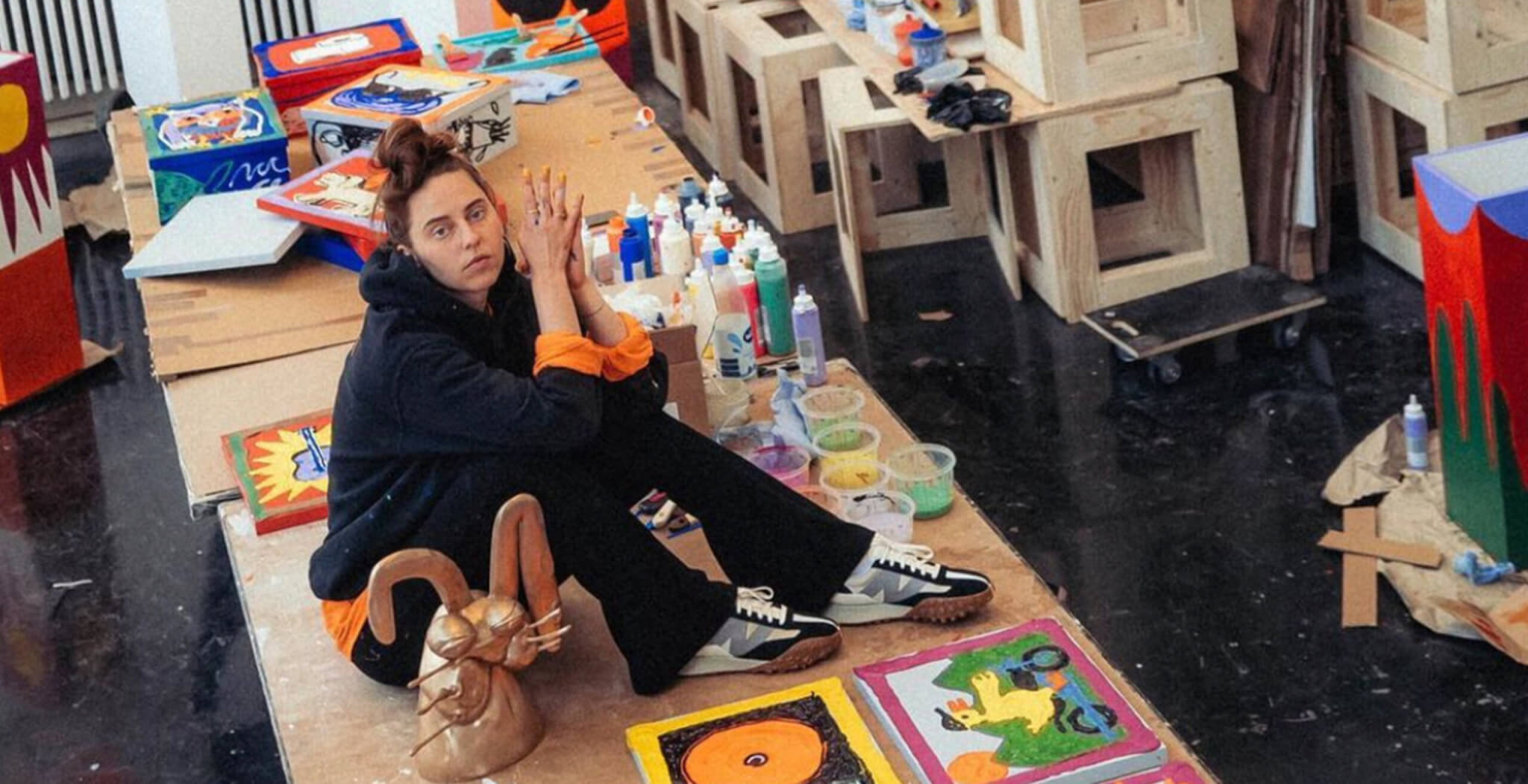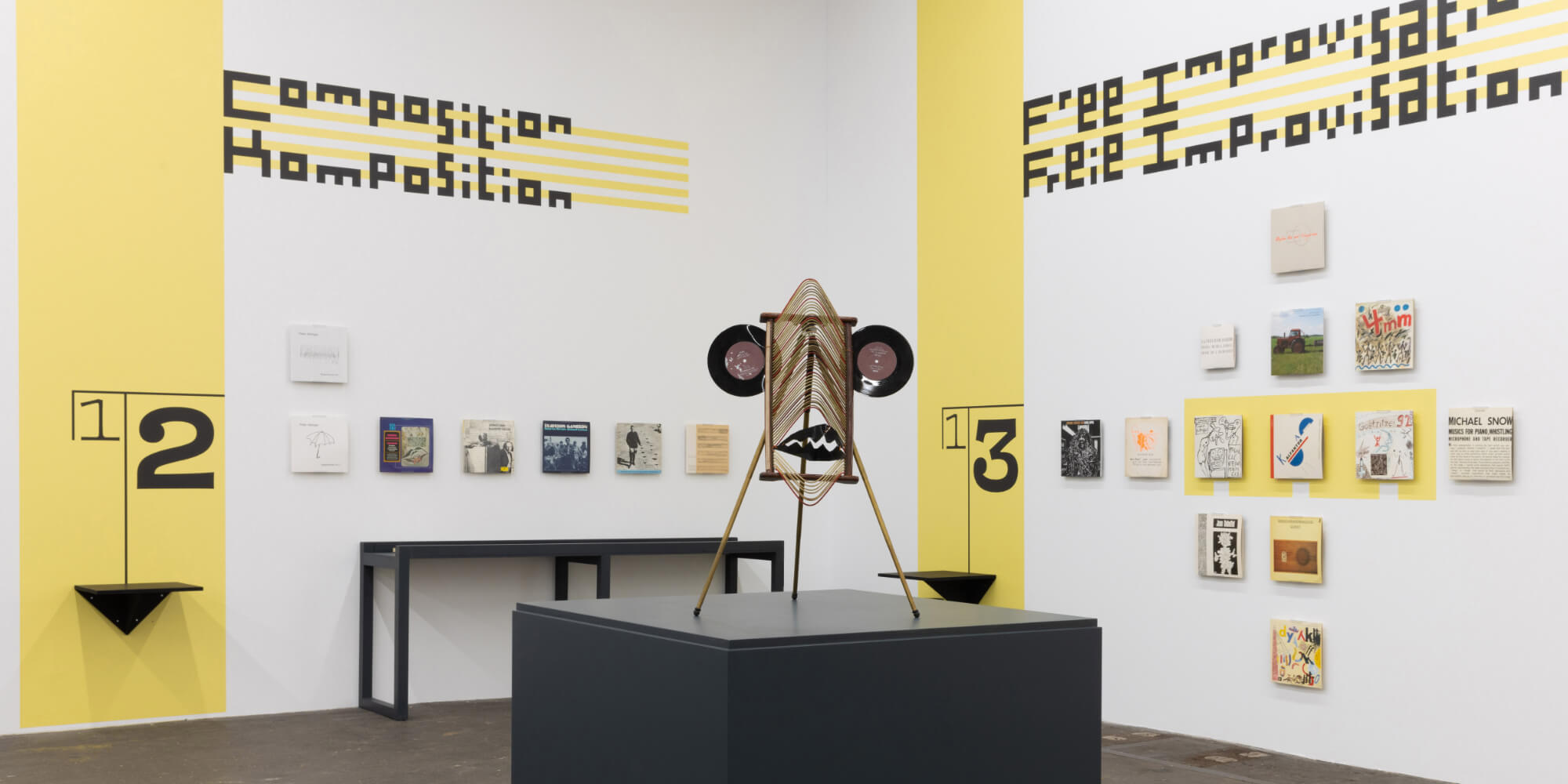Symbiotic art, or lab-engineered art, is anything but new. Science and biology are de facto in the toolbox of artists and designers since the advancements of biotechnology allow for endless possibilities. But can the fusion between art and biology, or the manipulation of living systems for gallery purposes be considered art? This question has followed us for years, but as science evolves at a rampant pace and our world is reconfigured by the technologies available, so has art become a venue for abstract applications and literal explorations of the living world.
For instance, Alexandra Daisy Ginsberg’s artwork Pollinator Pathmaker uses algorithmic technology to generate planting schemes for gardens, computed to support the greatest diversity of pollinating insects possible, in an attempt to respond to the decline in pollinator populations. This project resonates with a previous one, Resurrecting the Sublime, a library of scents from extinct plants and flowers that was exhibited during the first edition of La Fabrique du Vivant at the Centre Pompidou in Paris, in 2019. Ginsberg’s work uses technology to reach back into the past and bring lost fragments into the present, gravitating towards post-anthropocentric thinking that deals with the current climate and biodiversity crises.
Incubating art, however, doesn’t require a sophisticated and inaccessible environment as many think, and that’s precisely what Mary Maggic’s Estrofem! Lab illustrates. Using a mobile suitcase lab, Maggic’s workshop is about extracting hormones from urine, in an attempt to create access to hormonal knowledge whilst prompting conversations around the body and gender politics. Maggic’s workshop has been presented at different universities, including the HFBK in Hamburg, and it reminds us that we can take control of molecular biopower with DIY biohacking tools, a movement that lays scientific protocols to reverse engineer the scientific techniques used in genetic engineering.
But again, is that art? And isn’t it another case of human manipulation and subjugation of living systems? Well, and if not, what is it? Intuitively put a decade ago by the bio artist and director of INCUBATOR Art Lab Jennifer Willet, “bioart is an exploration of life as media through contemporary art,” and in that sense, contemporary art would be the exploration of life as a concept. If bioart explores non-human aesthetics, contemporary art explores human realities, both through experimental formats.
In a different direction — yet begging the same question as to where one system ends and another begins — bioart can too fulfil an aesthetic purpose. Dasha Plesen is gaining attention with a body of work that finds beauty in the processes we associate with decay and disease by mapping and documenting microbial growth. “Sometimes I can create an image in my head, and while watching the bacteria grow, it starts to change because of me being there, watching and waiting for that image I have in mind,” says Plesen of her creative approach, whilst converging that living organisms exist in complex webs of interrelations hard to control, and therefore, making her work unpredictable and ephemeral.
“Meta evolution has become a very powerful art movement! But it’s still problematic for collectors, because it mostly is temporal and fragile. So the challenge is to bring eternity to the moments which could last a few seconds,” says Plesen, adding that biomedia is about experiencing cycles of life and death rather than owning a fragment of a cycle. In collaboration with Sintezia, Plesen seeded a see-through boot with bacteria, showcasing 360° the growth of mould at Sintezia’s own gallery in Saint Petersburg.
For many, bioart still carries moral concerns as it employs living systems as artistic subjects. But how it can or not be ethically concerning is yet to be found. For now, the art of the biome reminds us that the living world is made up of numerous nested ecosystems, and that we are all in continuous relation, nurturing symbiotically endless cycles of life and decay.
Header image: courtesy of Dasha Plesen








